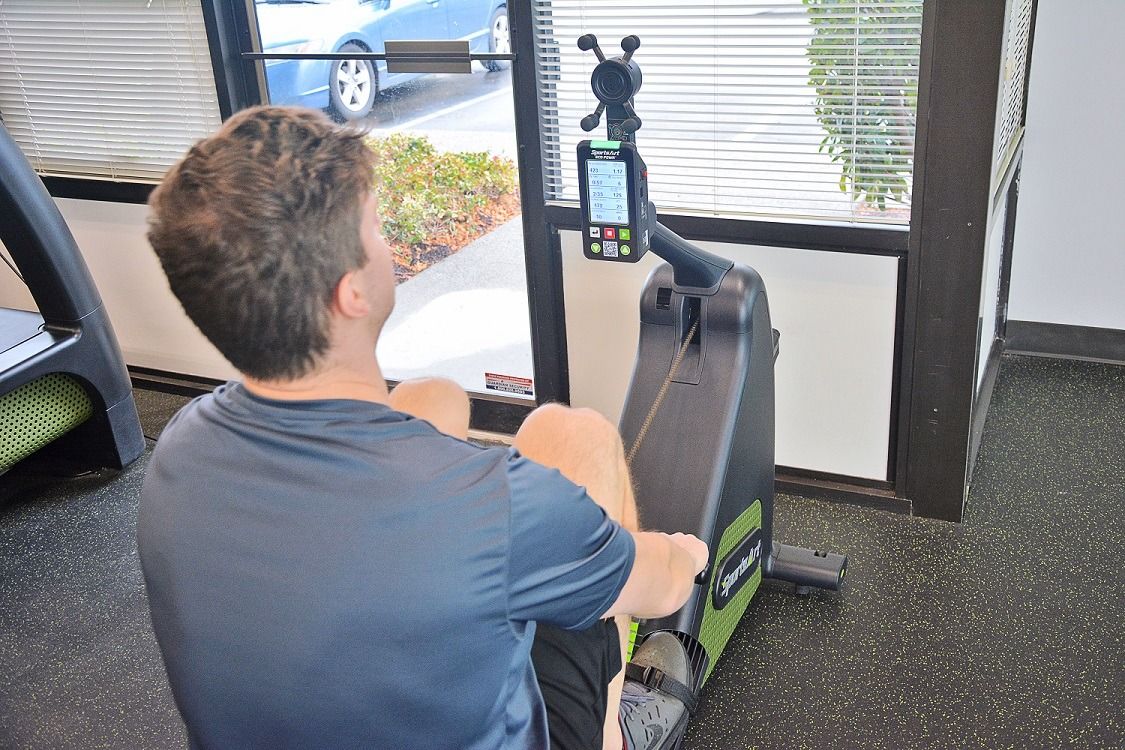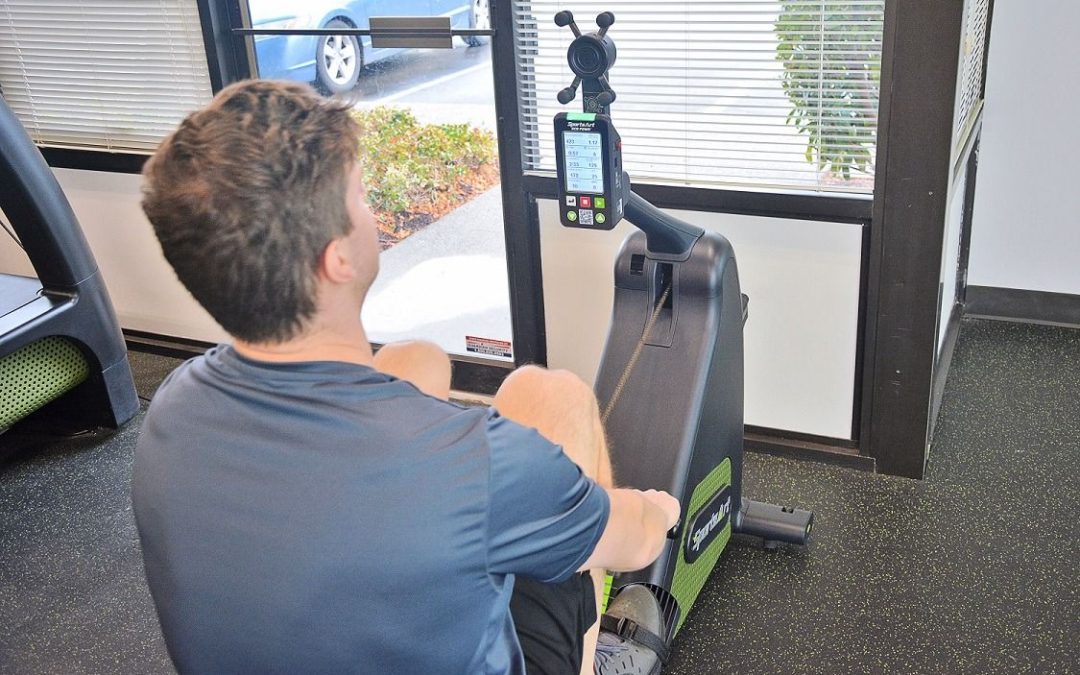
Various obstacles hinder the transition to a green future. The challenge is not going to be solved by one single innovation. Some innovations are significant, others minor. It's by fusing them all that we'll be able to see results.
At the Consumer Electronics Show, held in Las Vegas, exercise equipment manufacturer SportArt is displaying a new rowing machine. The latest addition to their ECO-POWR line, which already includes an elliptical, stationary bicycle, and a treadmill, uses an electromagnetic braking system to convert the user's motion into electricity.
These exercise machines tend to work on similar principles: the user's motions spin a metal disc and create resistance by various forms of brakes, similar to what you'll traditionally find on cars. This equipment instead makes resistance more similar to regenerative brakes found on electric or hybrid vehicles: the resistance comes from magnets that slow the disc down.
This allows the machine to create electricity instead of thermal losses. Using the company's patented inverter, said electricity is fed back into the local power grid as usable energy.
"All ECO-POWR products, including the G260 rower, convert up to 74 percent of human energy into usable electricity. While working out on the G260, users can generate up to 220wH of electricity per hour workout", says executive VP Ruben Mejia in an interview to Interresting Engineering
This means that an hour of rowing is enough to power a desktop computer for over two hours. Of course, this is not an innovation that by itself will solve the climate crisis. However, the power produced is still quite a significant amount. And it makes one wonder what other readily available and renewable energy sources are out there, waiting to be explored.







